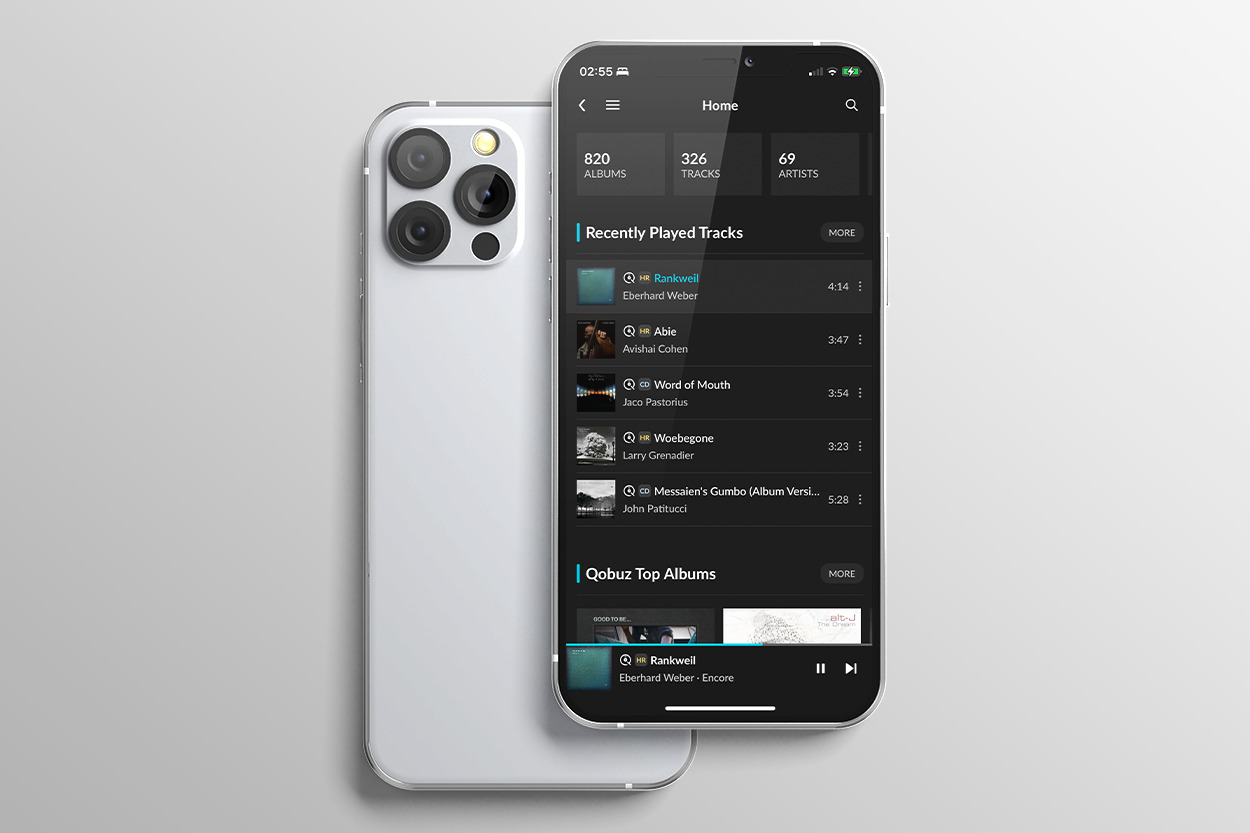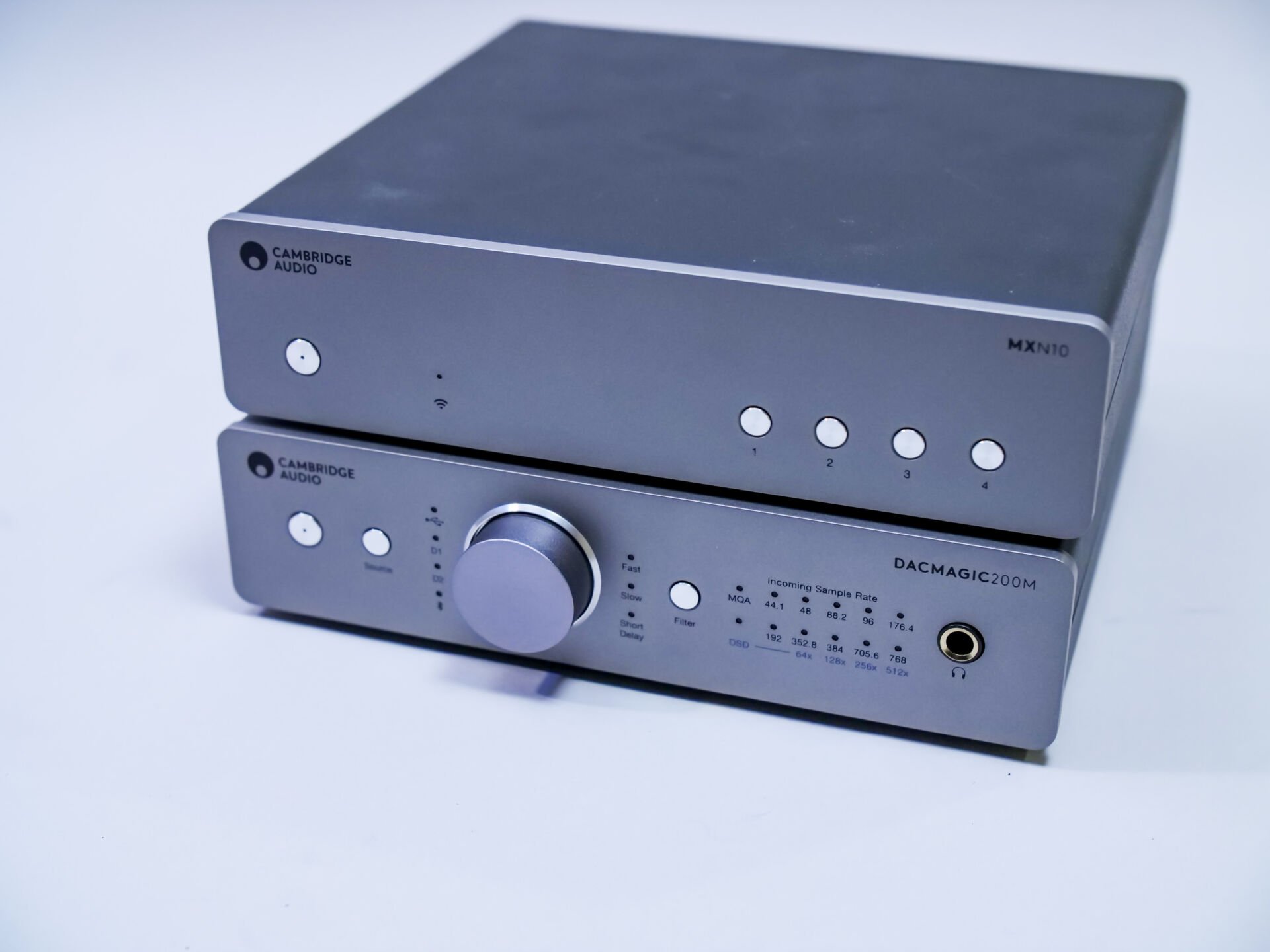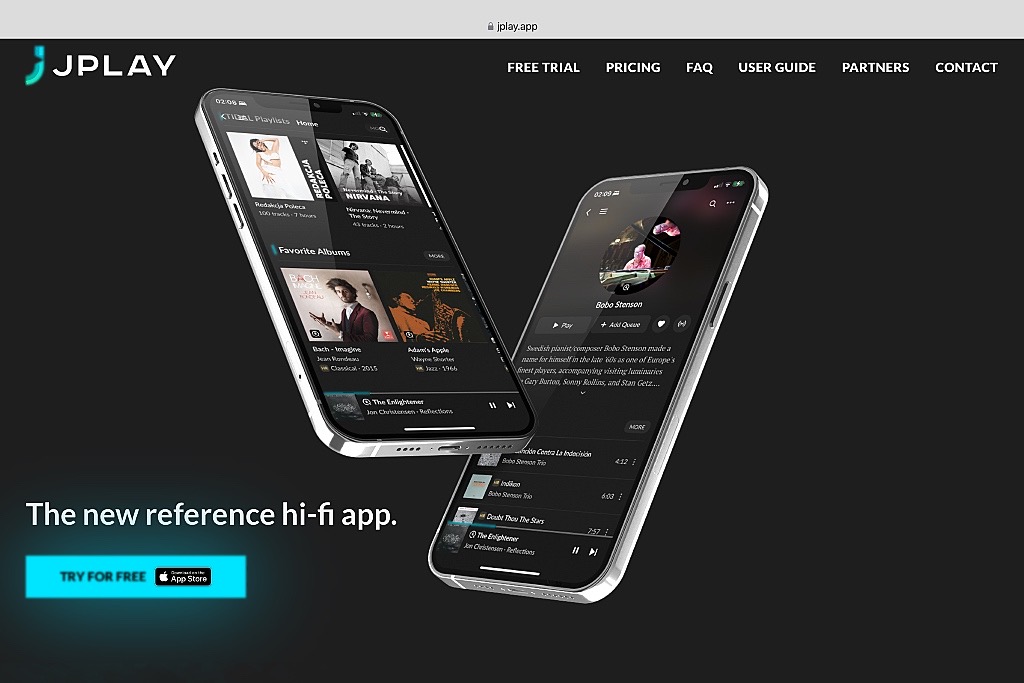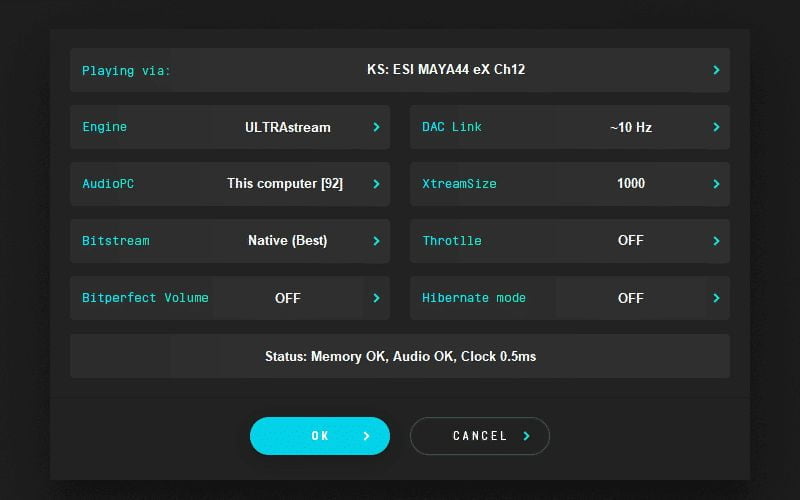

Intro
Contents
A streaming app bringing together Qobuz, Tidal and local UPnP servers. What does JPLAY offer to entice you to use it?
JPLAY and JCAT are brands from the same company based in Poland. JCAT is known for high-quality audio hardware for computers and JPLAY is the brand for software. JPLAY creates software for Windows, working together with their hardware, but the JPLAY app is an app for iOS and iPadOS.
Software for Android is not available. You can install the JPLAY app on a Mac with a chip from Apple’s M-family from the App store as well.
What does the JPLAY app do?
Many streamers have their own software platform, or use the platforms made by BluOS, Volumio or Play-Fi. Almost all streamers support the UPnP protocol, and JPLAY takes advantage of this fact. The app can thus control many brands of streamers.
It doesn’t stop at streamers, the JPLAY app can also play music on the iPad or iPhone or through a connected headphone. If you have a DAC connected to the iPad or iPhone, that also works.
What can the JPLAY app stream?
The JPLAY app streams local files which are offered on a UPnP Server and music from Qobuz and Tidal. Other music streaming services are not available in the JPLAY app.
You can only play local music files with the JPLAY app by using a UPnP Server on your PC or NAS. The best-known UPnP servers, with a focus on audio quality, are Minim and AssetUPnP.
How to position the JPLAY app?
JPLAY is not the only app that can stream local UPnP servers and Tidal and Qobuz from a single app environment. MConnect is the best-known alternative on the iPhone or iPad.
Audirvana can do the same, but that requires a PC or Mac and JPLAY is just an app. Audirvana can access the files in a folder on the PC, or on a shared network drive of the NAS. A UPnP server is not needed.
The JPLAY app differs from Audirvana in that it does not stream the music through the iPhone or iPad, but the JPLAY app only acts as a remote control. Audirvana processes the data on the PC or Mac and then sends it to the streamer.
Since JPLAY can also play on the phone itself, you can play music from Qobuz and Tidal in the same app at home and on the go. However, you cannot download files and play them offline. For mobile use, you can specify that you want to stream at lower quality if you play over a 4G or 5G connection. If you use both Tidal and Qobuz you need to set this separately in the configuration menu of each streaming service.
Feeling a bit dizzy? Fear not. In every day use, the JPLAY app is simple.








Thanks for the review. It seems a very nice app. Hopefully they will soon built an app for android as well 🙂
Thank you for the review, I also tried it for 30 days. Notably, JPLAY offers a unique feature that classical music enthusiasts, like Martijn, might appreciate – the ability to display PDF booklets alongside the music, a feature not commonly found in control point applications.
–
(quote from above )(…) JPLAY makes a point that the app has little interaction with the streamer, which should improve sound quality. In practice, it is hard to hear a difference from other ways of playing music.(…)
–
Within JPLAY’s settings lies a user adjustable option known as “Update Time,” which regulates how frequently the control point application queries the audio endpoint for progress updates. Remarkably, adjusting this setting to its maximum value can result in a staggering 90% reduction in network traffic. Marcin, JPLAY designer, uses the maximum possible value of 12 000.
It’s important to note that JPLAY functions primarily as a control point rather than a player, meaning that audio doesn’t pass through it directly. In contrast, other UPnP apps often maintain high network utilization, resulting in unwanted noise that can compromise sound quality. ROON also comes to mind that maintains high network utilization and therefore degrades SQ.
Ultimately, while JPLAY’s claims regarding the benefits of reducing network traffic are compelling, users may find it challenging to perceive an improvement in SQ depending on the specific hardware and setup of each user’s audio system.
Did you notice a difference in sound quality in those 30 days, and what did you compare it with?
Hoi Martijn,
I’ve noticed minimal variance when adjusting the ‘Update Time’ feature on my iPad while using PLAY. However this feature piqued my interest as I’m keen on optimizing my network for audio quality and would eagerly integrate any feature that could enhance this aspect. Given the cumulative impact of various adjustments in an audio setup, it’s plausible that JPLAY might yield more pronounced effects under specific network configurations.
I’ve compared streaming via Squeeze to Squeeze (LMS), which remains my preferred method. Unfiar because JPLAY can not control Squeeze. Squeeze offers a control app, such as Material, OrangeSqueeze, SqueezePlayer, and Squeezer. I am aware these apps are about as far from the coolness of JPLAY or ROON. But hey, who needs to watch their music anyway? 😉
Only some users with some audio systems are capable of distinguishing between control devices, such as an iPad versus a Samsung tablet. Wired vs. wireless. And certain users can perceive variations when the control app or only the tab is closed, underscoring the importance of being aware of the inlfluence of the frequency of requests sent to the player/server over the network.
Hi Paul, It’s very interesting that a control point that is not directly in the audio path does influence the sound quality of the audio system. I have the same problem with my Ipad. When I connect it hardwired to a switch in the audio room I can clearly hear a derating of SQ. This actually is also the situation of a router. When it’s on the network then there’s an influence.
I also try to look into it the other way around as well. Could it be that it’s not the extra device that is causing the deratings. Maybe it’s the switch that must divide its time with an extra device. Maybe when only one route is set then the signal is more constant in terms of noise, clock pads, crystal stabiltity etc.
My conclusion is, avoid connecting (hardwire) anything noisy to your ethernet in front of your HiFi equipment, like computers, Ipads or cheap routers. The noise that such devices pollute your network with is really hard to completely remove from the network, even if you have audiophile switches, and similar, in between. It is all about the noise, no other hocus pocus. 🙂
Hoi Wijnand,
A control point situated outside the direct audio pathway can still impact the sound quality of the audio system because it generates repeated requests on the router, switch, or player/server, which then have to respond to these requests, potentially causing disruptions in audio playback. Even updating the elapsed time of tracks requires interaction within the network. also every device connected to the network, sometimes serving other purposes, retains influence until it is disconnected.
Although the audio path might appear linear at first glance, it more closely resembles a complex web with many interconnected tentacles. These tentacles represent various points in the network where interference can occur. This interference can be caused by factors unrelated to how the original music file was recorded and how it should sound from your speakers, such as electromagnetic interference, network congestion, or signal degradation.
To resemble a ‘straight’ audio audio path one should mitigate interference from connected devices on our audio network, including (!) desktops, laptops, smartphones, tablets, smart TVs, gaming consoles, smart home devices, networked storage, printers, security cameras, smart appliances, Wi-Fi extenders, home automation hubs, voice assistants, other networked audio systems, digital assistants, wearables, home theater systems, and guest devices and so on.
I suppose you understand my point by now 😉 I suggest deploying a SEPARATE audio network. Fiber optic isolation or audio over wi-fi may be considered for optimal performance in your setup.
A SEPARATE audio network entails employing a dedicated router (typically integrated with a switch) exclusively for downstream audio connections. Furthermore, adjustments within the router settings can be made to fine-tune performance. As a general rule (and I do not exclude exceptions if it sounds good to you) it is important to note that power equates to noise, so opting for low-power devices or low power settings in routers, switches, and Wi-Fi access points is advisable. For example if utilizing Wi-Fi, consider utilizing the 2.4GHz band instead of the 5GHz band, and set it to the lowest power setting possible.
Cascading switches may seem advantageous, but there are trade-offs. While users used to cascade up to 8 or even 16 switches a few years ago, this practice has faded. The increased complexity of managing multiple crystals, clocks, power supplies, cables, and connections raises concerns about its feasibility and effectiveness in modern setups.
Have a ‘goed weekend’ !
Could I point out that we also have a forum where you could start discussions about subjects? Unknown to many people we noticed.
The forum also allows for uploading images and infinite reply’s to an entry.
Hi Martijn,
I understand what you mean. Just an idea. Maybe the forums are a bit too much in the background. Besides this, probably the main articles are the reason discussions appear. Would it be possible to put our reactions here, but with a choice button, discussion or reaction. This here on the page of the main article. Reactions will then be on the main page and the discussions (which is a side dish) can be created on a separate forum page which (with a link in both ways) still can keep a connection with the main article. This way people don’t have to find out where to put something and where to find something.
A good point Martijn, lately I realised this comment section is more suited for one liners or one (or two) paragraphs maximum. Thanks.
Hi Paul, Thanks! I think this really is an interesting discussion. I have some news to share. I will respond on the forum later today 🙂 In the mean time ‘Goed weekend’